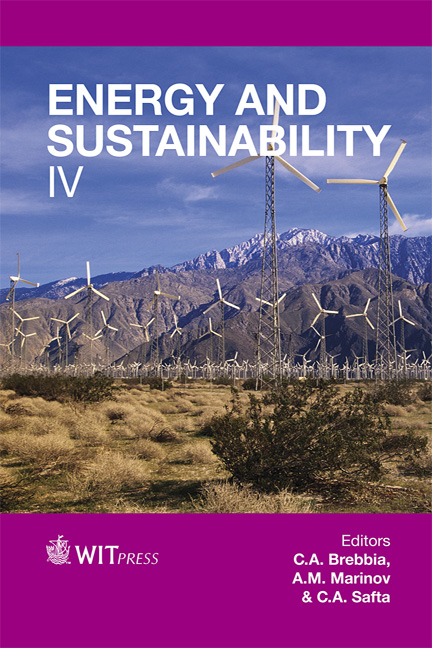Towards A Profile Of Sustainable Energy In Baja California, Mexico, For 2011–2025 From An Environmental Perspective
Price
Free (open access)
Transaction
Volume
176
Pages
12
Page Range
3 - 13
Published
2013
Size
1,639 kb
Paper DOI
10.2495/ESUS130071
Copyright
WIT Press
Author(s)
M. Quintero-Núñez, G., Muñoz-Meléndez, H. E. Campbell-Ramirez & E. Díaz-Gonzalez
Abstract
The energy sector is fundamental for the development of Baja California (BC). At the end of 2008 the installed capacity of electricity in BC was 3,360 MW, which represents 7.191% of the total capacity of the country. The technology employed in the generation of power in the state of BC according to its importance is geothermics (720 MW), combined cycle (498 MW) and conventional thermoelectrics (620 MW), all of which are managed by the Mexican utility company Compañia Federal de Electricidad (CFE), and combined cycle (1500 MW) generated by independent producers. The environmental impacts associated with the electric sector in Baja California are given mainly in the form of atmospheric emissions from the consumption of fuel. Other environmental impacts are associated with: 1) the use of considerable volumes of water, 2) the generation of residuals and to a lesser degree 3) the emission of residual heat, noise, vibrations and sinking (in geothermal fields). To make the energy sector more sustainable, renewable energy resources have begun to be exploited in the state using wind (10 MW), photovoltaics (5 MW) and wave (3 MW) power with an optimistic plan of increasing capacity in the medium term . The objective of this work is to describe the five indicators of energy sustainability in the environmental dimension for the state of BC in relation to climate change, air, water quality and management of solid residuals. Keywords: energy sustainability, Baja California, Mexico, renewable resources, energy indicators.
Keywords
Keywords: energy sustainability, Baja California, Mexico, renewable resources, energy indicators.





